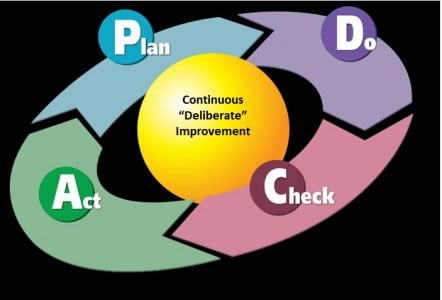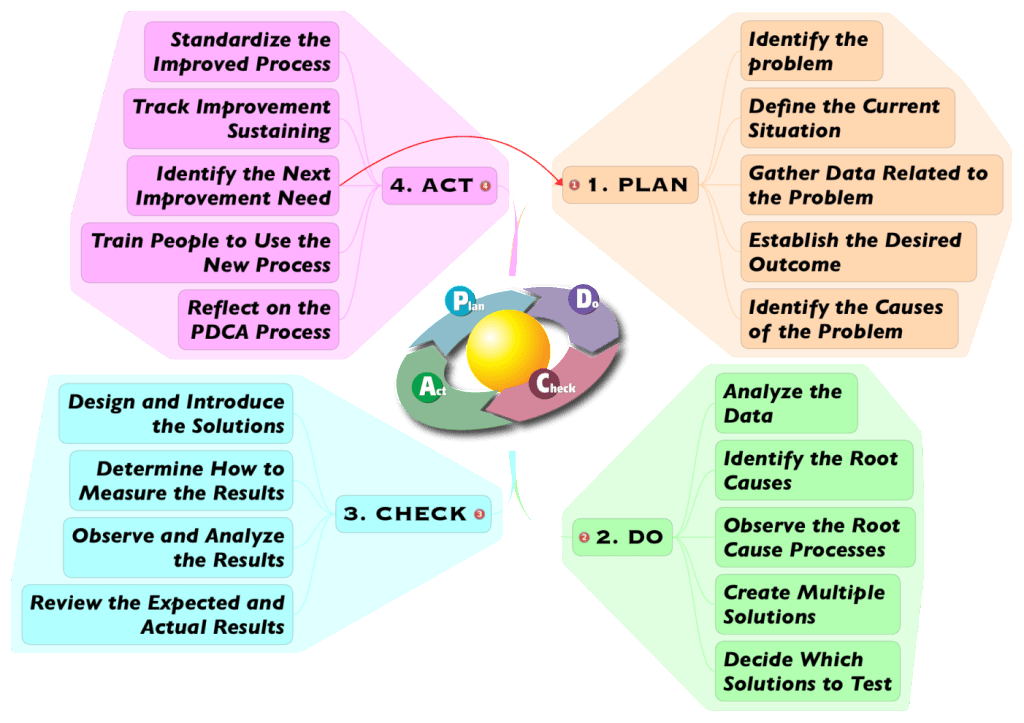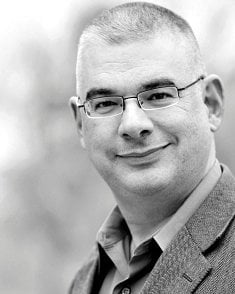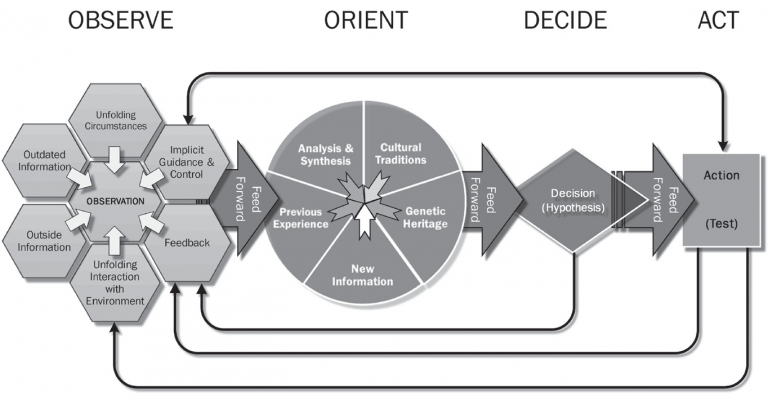New Year’s Resolution – Personal Plan, Do, Check, Adjust
I am sure that for many of us, 2011 was quite the ride. And in spite of the considerable challenges and incredible odds, the vast majority of us made it to 2012 (certainly, those reading this article did). A “Hip-Hip-Hurray” to all of us!
As the year winds-down and the Holidays befall us, we are granted a moment to disengage from our careers and the rat-race to spend more time with our friends, family and even ourselves. During this time, it’s natural for us to reflect on the past year and try to “figure it all out” what worked and what didn’t work, what we could have done differently, what we would have liked to do but didn’t, and what we would change of ourselves or our circumstances.
Many of us, if not most of us, will consider making a “New Year’s Resolution” at this time of year – a pledge to ourselves (sometimes made privately, sometimes made publicly and with great fanfare) to change something about our conditions. Some of these Resolutions are rather modest with varying degrees of difficulty and are reasonably achievable, such as: read more or; take a lunch instead of eating at my desk or; turn my mobile-phone off at 11pm.
Some Resolutions are grandiose and practically impossible to achieve, such as: lose 50 pounds (23kgs) by Easter or; shave 20 strokes off my golf game by the end of May or; meet someone, get married to the person and have a child this year.
How many people sign-up for a Fitness Club in January and never visit it again after March – the effort it takes to achieve the goals is unsustainable.
One of my friends who has a profile on Facebook posted this picture as their New Years’ Resolution. Trying to achieve all of them, however abstract and obtuse they might be, is unattainable because there are too many – the Theory of Constraints (ToC) will be the limiter.
I told him that he could not possibly have “MORE” of all that unless he took less of something not on the list or, at best, to “pick two” and concentrate on those.
For someone to successfully realize a Resolution requires two attributes; 1) the sustainability of the pursuit in achieving the Resolution, and 2) being mindful of the constraints on your resources (time, money, etc…) in pursuing this Resolution. Remember, your realization of your Resolution cannot be by sacrificing your other obligations or abdicating responsibilities.
The first necessary characteristic of a credible Resolution is “Sustainability”.
Simply stated, “Sustainability” is the capability to endure over a period of time – usually involving a rate of pursuit, prosecution, or consumption. For instance, let’s take running as an example:
The World Record for the 100m Dash is 9.58sec held by Usain Bolt of Jamaica and achieved on August 16, 2009 in Berlin, Germany. If we use this pace and extrapolate out to this being a Marathon race (42.195km or 42,195m), we should expect the record to be 1hr 07:37min.
Instead, the World Record for the Marathon is 2hr 03:38min held by Patrick Makau of Kenya achieved on September 25, 2011 – also in Berlin.
The difference between what one might expect versus what one is able to achieve is directly related to the sustainability of the pace that is set. Too many people try to accomplish far more than is physically and practically possible by setting arbitrary goals which are unattainable and made even more-so by allocating an artificially minimal amount of time for their achievement.
Take losing weight – I am sure that most people reading this article have wanted to lose some weight at one point in their life. It’s not very difficult if you make sure, above all else, that you keep a sustainable pace. For example, if you want to lose 50lbs (23kgs), that is only 1lb (0.45kgs) per week for 50 weeks (just in time for next year’s Resolution). Just making it a point to WALK for 30min a day and reduce “empty calories” should make this goal achievable in a year and without any strain (or gym memberships) required.
… However, if you try to achieve the same goal in 90 days, you will likely fail. You will fail to achieve because the pace you have set is unsustainable. There is too much sacrifice – you will get frustrated (or exhausted), and you will give-up.
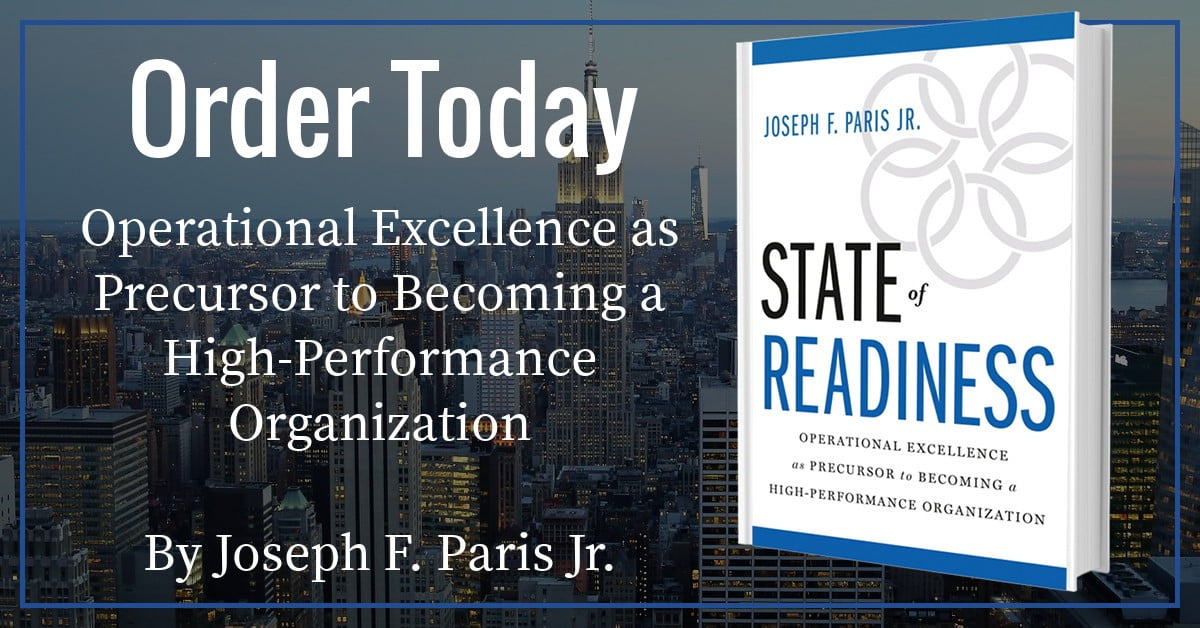
But what is the real objective? Is it to lose 50lbs? Or is it to lose it in 90 days? Set a sustainable pace if you want to realize the goal.
The second necessary characteristic of a credible Resolution and closely related to “Sustainability” is that the Resolution must adhere to the “Theory of Constraints” (ToC).
The ToC is a management approach introduced and made popular by Dr. Eliyahu M. Goldratt in his book “The Goal” published in 1984, and expanded upon in his later book, “Theory of Constraints” in 1990. It discusses “bottlenecks” which cause a back-up inhibiting progress. It investigates “weak links” which will result in failure if the load capacity is exceeded, and talks about “prioritization” of what activities and actions should be given preference over others and under what circumstances.
Let’s face it; none of us have a lot of free time or endless resources. Therefore, we have to consider these constraints when we introduce any new initiatives into our lives. We have to carefully prioritize and we have to be cautious against taking extreme positions (which are almost always eroded).
As an example; we will continue with our illustration of losing weight – with our Resolution being to lose 50lbs. After meeting with a personal trainer and our physician, it is decided that a program can be developed which will result in losing this 50lbs in 90 days. However, for this goal to be achieved, it is going to take a 90min intensive work-out six (6) days per week plus a 30min warm-up and cool-off period for a total of 2hrs per day of time required, six (6) days per week. Add to this the 30min it takes to get to/from the gym and we are looking at an additional 2.5hr daily commitment six (6) days per week.
… Oh, and you are on the road a minimum of one (1) week per month for work.
In addition to this, you have to modify your diet extensively by cutting-out all processed food and empty calories. No more sandwiches, except using whole-grain breads. No more alcohol or sodas. Certainly you have to eliminate the sweets, chips and other junk-food.
If this were you and your goal; where do you see the bottlenecks and weak links? How would you re-prioritize the other responsibilities and obligations in your life so this program could be realized? How long would it be before you gave-up completely?
With Resolutions, you must understand that effecting a change is going to have an impact on your existing routine. Is the impact going to cause something critical to fall off the truck? Might the best Resolution for you be a Resolution that results in your having more time either immediately or at its conclusion? Maybe 5-S your life so you waste less time looking for things might be a better start?
Many of you might already know that I own the Operational Excellence Group on Linked-In. By my definition; “Operational Excellence is improving the performance of a company AND the circumstances of those who work for them.” As far as Linked-In groups are concerned, it’s a pretty respectable group consisting of 17,000+ members and growing by 200+ members per week. You are encouraged to join.
Since this Group is dedicated to improvement and New Years’ Resolutions are all about improving, I decided to pose the question, “What is your New Years’ Resolution” as a Discussion. The results were interesting – some even gave me cause to ponder.
Poster#1: “To be more organized and diligent in deliverables and commitments”. This seems like a practical and achievable Resolution to me. There is no real metric other than “more”, so I am sure a level of success is attainable.
Poster#2: “… we need to be consistent in everything we do. But are we with the right team who really motivate us to achieve objectives?” This poster is making Resolutions for others and not themselves.
Poster#3: Had a nice mix of professional and personal Resolutions. Some were dedicated to improving the performance of those around at work – with as many dedicated to participating with the loved-ones whom it is obvious are cherished. My personal favorite was, “Understand and deploy personal skills to develop more and estrange fewer fellow human beings.” The Poster and I also share a challenge in each of our respective literary efforts (which caused me to laugh).
Poster #4 & #5: They each were focused on bettering their personal health – one by “jogging twice per week” and the other by “long walks five times per week” [the second with the added goal of losing 10kgs (22lbs) in four months]. Both seemed reasonably attainable, but losing 10kgs in four months will be easier if the diet is also modified slightly (just less breads and fewer “empty calories” should do it).
But the most interesting posts were from people who made it a point to NOT make New Years’ Resolutions. They made great efforts at justifying why they don’t make Resolutions by attempting to wrap their justification, ironically, in some manner of “Continuous Improvement”.
One poster said, “I don’t have Resolutions for the year, but I do have a new system I started yesterday…” with the “system” being a way of measuring progress, achievements and staying on-target. Sounds very much like a Resolution to me. Another poster does not make Resolutions because, “When the daily work hits, the New Years’ Resolution is quickly forgotten.” It seemed to me that this person is having difficulty getting in control of, or otherwise overwhelmed by the goings-on in their life.
My most favorite post of all was this; “I do not make resolutions. I examine my life and see where I might be able to improve my performance. I gather the team (wife) and talk about what their perception of the proposed improvement might be. As a team we make suggestions about where we are going and how to get there. What waste might be eliminated and how to decrease the variation in the process. Before we start the improvement process we discuss milestones and how to sustain the change for the long term.” I could not help but wonder how the “team (wife)” would respond to reading this post or what her response would be if given the chance to answer the same question.
I can understand a person not making a Resolution – maybe they don’t think about making one or otherwise don’t care about making one. I know that I am in this camp most of the time. But I can’t help but think that people who make it a point to refuse to make Resolutions have an irrational, if not almost overwhelming, fear of failure. I mean, let’s face it; the failure to achieve almost every Resolution that can be made will not result in catastrophe – so why not take a personal account, pick something about yourself and try to improve upon it?
If we apply some of the basic “Continuous Improvement” (CI) principles to ourselves, we find; “self-reflection”, “identify and work to eliminate suboptimal processes”, and “pursue perfection by taking incremental steps”.
One of the mantras at the core of Continuous Improvement is “Plan, Do, Check, Act (Adjust)” – (PDCA) – also known as the “Deming Cycle” named after Dr. W. Edwards Deming. It is a management method used to manage and control the continuous improvement process.
PLAN: Define the Strategy, Develop the Plan to achieve the Strategy, and Identify and Organize the Logistics to support the Plan.
DO: Execute and pursue the Plan – making sure to collect data during execution to measure and analyze effectiveness.
CHECK: Examine the results. Were they as expected? Are there further opportunities for improvement and, if so, are those opportunities worth pursuing?
ACT (ADJUST): Pursue follow-on remedial action as necessary to close the gap between the expected and the realized.
In the end, a Resolution is just a natural part of a personal Continuous Improvement process – part of a program that started the moment a person was born. It involves the performance of an assessment (Check) and plan to improve (Act/Adjust).
So, what’s YOUR New Years’ Resolution?
At this point, perhaps before now, you might be wondering, “Alright, Paris – what’s YOUR Resolution?”
… Fair enough.
My Resolution is for 2012 to be “The Year of Getting Things DONE!”
I have spent the last couple of years in a “transition period” – moving to Germany, expanding the global footprint of my firm, and changing the scope and charge of my responsibilities. There were a great many projects and action-items associated with, or the result of, all of that movement. Over this period of time, it became apparent that an ever increasing number of these projects and action-items were being created, the resources to complete them were being spread ever more thinly, and fewer of them were being completed.
Accordingly, I have Resolved that the year’s theme for 2012 will be to emphasize completion over expansion. I have committed to getting whatever existing projects and action-items I might have to a past-tense state, and to be judicious in adding new projects and action-items so that they are properly prioritized and introduced into the flow in an engineered fashion. They are all important – just some are more important than others.
So, as “Larry the Cable Guy” says, “Git r done”.
Joseph F Paris Jr is the Chairman of the XONITEK Group of Companies. With over twenty years as entrepreneur, academic and professional instructor, and strategic consultant – he is a champion of Operational Excellence (Lean Six-Sigma and Leadership) who has devoted himself to increasing stakeholder-value for his clients and constituents.

